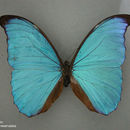fi
nimet breadcrumb-navigoinnissa


San José: Est. Carrillo (700 m) 10 09 45 N 83 56 15 W, Santa Rosa de Puriscal (700 m) 9 42 40 N 84 23 10 W, Mastatal (300 m) 9 41 21 N 84 22 00 W, Alajuela: Río San Lorencito (850 m) 10 13 15 N 84 36 00 W, Cariblanco (830 m) 10 17 N 84 11 W, Cartago: Río Chitaría (750 m) 9 55 N 83 36 W, Heredia: Magsasay (150 m) 10 24 N 84 03 W, El Plástico (550 m) 10 18 N 84 04 W, Est. La Selva (50 m) 10 26 N 84 02 W, Puntarenas: Cerro Nara (1086 m) 9 30 N 84 01 W, Sirena (0 - 100 m) 8 27 50 N 83 35 00 W, Quebrada Bonita (0 - 100 m) 9 46 25 N 84 36 35 W, Llorona (0 - 25 m) 8 35 30 N 83 43 00 W, Golfito (2 m) 8 39 01 N 83 10 42 W, Punta Mala Hda. Hilda Marina (0 m) 9 31 N 84 32 W, Punta Banco (0 m) 8 22 03 N 83 08 53 W, Guanacaste: Cacao (1100 m) 10 55 00 N 85 28 00 W, Pitilla (700 m) 10 59 25 N 85 25 40 W, Limón: Quebrada Molinete (400 m) 10 12 N 83 54 W, Bordon (500 m), Hitoy Cerere (100 m) 9 40 30 N 83 01 20 W, Suretka (50 m) 9 35 N 82 57 W, Bribri (32 m) 9 38 N 82 50 W
Distribucion General: De Nicaragua a Colombia.
Larva en quinto estadio: cápsula de la cabeza marrón rojizo, con una densa pubescencia de pelos rojizos en la corona. Cuerpo con finas líneas de color rojo y verde. En el dorso dos parches conspicuos verde limón, con penachos de pelos de color blanco y rojo, con líneas de color rojo a lo largo de la línea media. A los lados el cuerpo está cubierto de pelos de color marrón rojizo y blancuzco.
Pupa: ovoide, de color verde claro. Cabeza levemente bífida, con áreas transparentes cerca de los espiráculos.
Macho: ala anterior de color celeste iridiscente con ápice negro. Ala posterior celeste iridiscente con región anal café claro.
Hembra: de color café claro con una franja ancha celeste iridiscente que cubre las áreas basal, postbasal submedia y parte del área media. Un par de hileras de manchas blancas en el área postmedia y marginal. En el extremo de la celda discal del ala anterior una franja blanca.
Morpho amathonte is a Neotropical butterfly belonging to the subfamily Morphinae of the family Nymphalidae. It is considered, by some authors, to be a subspecies of Morpho menelaus.
The genus Morpho is palatable but some species (such as M. amathonte) are very strong fliers; birds – even species which are specialized for catching butterflies on the wing – find it very hard to catch them.[1][2] The conspicuous blue coloration shared by most Morpho species may be a case of Müllerian mimicry, or may be 'pursuit aposematism'.[3]
Morpho amathonte has a wingspan of about 100–150 millimetres (3.9–5.9 in). The total number of days for which it takes this species to grow into an adult is about 120 days. During this time, the butterfly is an egg for 14 days, then remains as larvae for 83 days, and then remains a pupa for about 19 days.[4] This species shows an evident sexual dimorphism which differentiates males from females. The basic color in males is bright metallic blue, sometimes bluish. In the females the upper surfaces of the wings are partially blue and have a wide dark gray-brown margins, decorated with small white spots running along the outer edge of both wings. From closely related species Morpho amathonte is distinguished by a large dark spot at the top of the front wings. The undersides of the wings are brown, becoming lighter towards the edges, with three or four colorful and bright eyespots clearly visible on each wing.
This species can be found in Panama, Costa Rica, Venezuela, Colombia and Ecuador.
Morpho amathonte is a Neotropical butterfly belonging to the subfamily Morphinae of the family Nymphalidae. It is considered, by some authors, to be a subspecies of Morpho menelaus.
The genus Morpho is palatable but some species (such as M. amathonte) are very strong fliers; birds – even species which are specialized for catching butterflies on the wing – find it very hard to catch them. The conspicuous blue coloration shared by most Morpho species may be a case of Müllerian mimicry, or may be 'pursuit aposematism'.
Morpho amathonte is een vlinder uit de familie Nymphalidae.[1] De wetenschappelijke naam van de soort is voor het eerst geldig gepubliceerd in 1860 door Achille Deyrolle.
Bronnen, noten en/of referentiesMorpho amathonte là một loài bướm phân bố ở Panama, Costa Rica, Venezuela, Colombia và Ecuador.
Phương tiện liên quan tới Morpho amathonte tại Wikimedia Commons
Морфо аматонте[1] (лат. Morpho amathonte) — бабочка из семейства Nymphalidae, относящаяся к подсемейству Морфид. Отдельные авторы рассматривают её как подвид Morpho menelaus.
Размах крыльев 100—150 мм. Окраска самца ярко-синяя, иногда голубоватая. У самки — с широкой серо-бурой каймой, украшенной мелкими белыми пятнами, проходящей по наружному краю обоих крыльев. От близкородственных видов отличается более крупным тёмным пятном на верхушке передних крыльев. Нижняя сторона крыльев коричневых тонов, становящихся светлее к краям, с пестрыми светлыми пятнами и на каждом крыле отчетливо видно по 3—4 глазка[1].
Панама, Коста-Рика, Венесуэла, Колумбия, Эквадор.
Морфо аматонте (лат. Morpho amathonte) — бабочка из семейства Nymphalidae, относящаяся к подсемейству Морфид. Отдельные авторы рассматривают её как подвид Morpho menelaus.